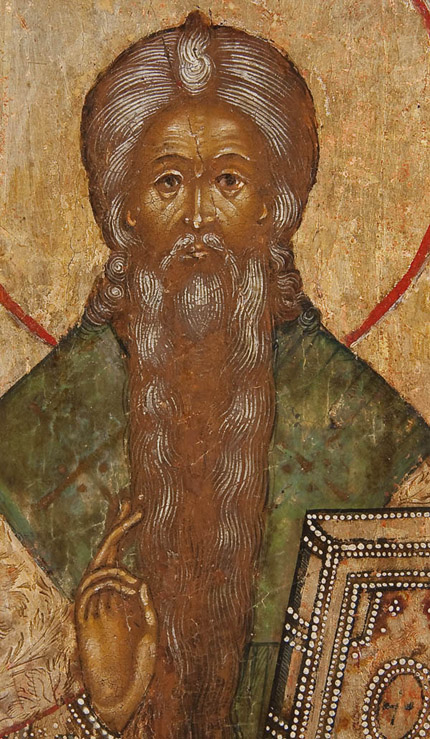Today I would like to talk a bit about this icon of Kharlampiy:

Kharlampiy, in Eastern Orthodox tradition, was a priest who was martyred in the year 202 at the age of 113 (others say 107; these stories often vary in details). I will not repeat his story, which is easily available elsewhere. Suffice it to say that it follows the usual form of hagiography, which should not be confused with history. The lives of the early saints, though there may be some historical elements now and then, are largely pious fictions that follow similar patterns and present similar motifs.
What I do want to emphasize is that the veneration of Kharlampiy, like that of other saints, continues the pre-Christian practice of venerating and asking favors of deities both great and minor. When Christianity declared the old gods to be “demons,” the populace needed a substitute, and that substitute was found in Christian saints such as Kharlampiy. His name is just a Slavicized version of the Greek Χαράλαμπος — Kharalampos, pronounced “khar-A-lam-bos” in modern Greek. He is a very popular saint in Greece, and is often found in Russian icons as well. Among other things, Eastern Orthodox pray to Kharlampiy for relief of mental problems. That relates to one of the “miracles” of Kharlampiy, in which he drove out a devil from a possessed person. On the island of Lesvos (Lesbos), there is a tradition of sacrificing a bull at the chapel of Kharlampiy/Kharalambos — the unfortunate victim is decorated with garlands, just as was done in pre-Christian times.
Kharlampiy is shown here robed as a bishop. In his left hand he holds a cloth supporting the Gospel book (the cloth is to show veneration when touching sacred objects). His right hand is held up with the fingers forming the sign of blessing favored by the Old Believers, who were separated from the main body of the Russian Orthodox Church in the mid-1600s over disputes about ritual forms, etc., one of which was this distinctive way of making the sign of blessing. It is a useful way to recognize Old Believer icons, which in any case are often more traditional and stylized in form than those of the State Church in the following centuries.
If we look more closely at Kharlampiy’s face, we can easily see the method of painting. The entirety of the hair, face and beard are first painted in a dark brownish color (sankir), and then the features of the face are created by superimposing layers of the same base color, only progressively lightened with the addition of white (belila), with highlights being very white. The hair and beard are painted simply by adding thin, curving strokes of white over the sankir base. A few darker details are added, and it is finished. But still the sankir base color is easily seen behind the added layers.
